The Truth About Your Cotton Bedsheets Will Give You Nightmares
In July, when the U.S. hit peak heat and humidity levels, Cotton Incorporated, the national trade association for cotton importers and producers, launched a campaign called #CoolerInCotton with a video about how the textile can alleviate sweaty summer woes. A young woman prances around on an old-fashioned Hollywood-style set singing: “It’s 95 degrees and in your pants it ain’t pretty” and “We should be able to go for dinner without sweating through that gown.”
The ad is meant to be good fun, but it also points to a truth about modern life, which is that we depend on this absorbent, durable, and inexpensive material to get us through the day. We wake up in cotton sheets, dry off with cotton towels after showering, and layer cotton clothing over ourselves. Cotton is ubiquitous, but most of us have no idea where it comes from.
In Search Of Sheets
Scott and Missy Tannen, a New Jersey couple, discovered this reality firsthand several years ago, when they upgraded to a king-size bed and needed new sheets. It was around the time that the Rana Plaza factory in Bangladesh had collapsed, killing 1,129 workers in a catastrophe that sent ripples throughout the world. As the Tannens searched for high-quality bedding in department stores, they considered brands like Frette and Sferra, but wanted just a few simple details about how the sheets were manufactured: Where did the cotton come from? Were pesticides used in the farming process? Where did the fabric get milled?
So they dug around and discovered that it was almost impossible to get straight answers. When a label says that the product was made in Portugal, Italy, or the United States, it generally means that the fabric is sewn or finished in these countries, not that the cotton itself was picked or processed there. The Tannens went from being mildly curious to being totally consumed.
As a serial entrepreneur and investor, Scott saw a business opportunity as he waded through this avalanche of questions. He thought it might be a good idea to create a direct-to-consumer luxury bedsheets brand that offered insight into the cotton supply chain. “We were frustrated that there is no one single person in the supply chain you can get answers from,” Scott says. “That’s why we felt compelled to go right to the ground level and build an entire business from the ground up.” In 2014, the couple started Boll & Branch, which sells an array of bed linens, from classic cotton sheet sets that cost between $200 and $260 to $125 cable knit blankets and $50 baby blankets. The company discloses where the cotton for all its products is farmed and milled, and last year, after a rigorous certification process, Boll & Branch became the first Fair Trade bedsheets brand on the market.
The Tannens bet big on their new venture and used their own savings as startup capital because they believed that there had to be others who cared as much about the origin of their cotton as they do. It appears their instincts were right: Two years in and they’re already profitable, on track to sell $40 million worth of sheets this year. To launch the company, they delved deep into the murkiest corners of the global cotton trade, and now hope to share what they learned with consumers who almost certainly aren’t aware of the ethically dubious practices on which the industry relies.
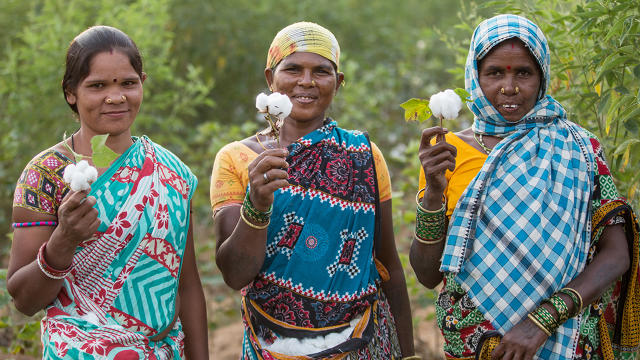
Infinite Links In The Cotton Supply Chain
When Scott and Missy started to build Boll & Branch, they began to piece together why nobody in the industry seems to understand where the cotton comes from.
The U.S. is the world’s third-largest cotton-producing country. Many of our country’s farmers are represented by Cotton Incorporated and well-regulated by the FDA. But the rest of the world’s cotton comes from developing countries, including India, China, Pakistan, Brazil, and Uzbekistan, where the crop is harvested by small farmers who only own a few acres of land. Since this is such a fragmented production process, middlemen pop up all over the supply chain. For instance, one entity purchases the raw cotton from individual farmers and sells it in bulk to factories where workers extract seeds, clean bolls, and spin fibers into thread. Another entity buys the spools of thread and sells it to mills where it is turned into fabric and dyed. And yet another entity sells the textiles to other manufacturers who turn it into products for retail. The process often takes place across many countries, combining cotton from various regions, which adds even more layers of confusion.
“We were surprised by how little a lot of the folks in the industry that we talked to actually knew about the products,” Scott says. “What they knew was from the time their link in the chain started until their link finished.”
By the time textiles arrive at manufacturing centers, they are far removed from the farms where the cotton was first produced. Each time the Tannens asked factory or mill owners about the cotton’s origin, they kept running into dead ends. To find out what actually happens at ground zero of cotton production, Scott visited India, the largest cotton-producing country in the world. He was shocked to discover the working conditions of farmers who are regularly exposed to toxic chemicals.
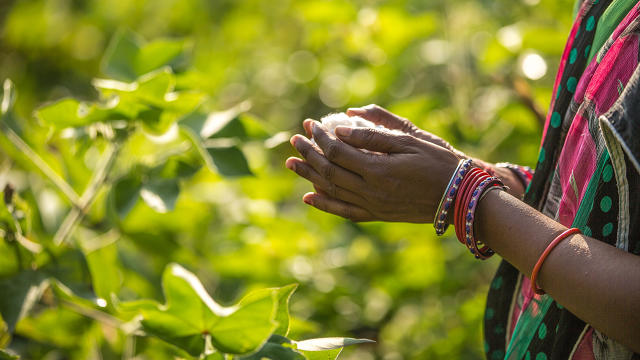
The World’s Dirtiest Crop
Cotton is a fragile crop, susceptible to being devastated by a wide range of pests including boll weevils, aphids, and army worms. As a result, although cotton only covers 2.5% of the world’s cultivated land, cotton farmers use 16% of the world’s pesticides. In the 1950s, scientists invented chemicals that allowed cotton farmers to keep pests at bay. By the 1990s, the company Monsanto developed a genetically modified cotton that produces pesticides in its tissues and can be used in conjunction with other chemicals that target the remaining harmful insects. These genetically altered plants account for over 90% of the cotton produced in India and China, which supply half of the world’s cotton.
The cotton trade in the U.S. is founded on a brutal, tragic history of slavery. Two hundred years later, the global business is still entangled with fundamental human-rights violations, as cotton workers around the world are being harmed by the crop. When Scott visited farms in India, he watched farmers go out into the fields spraying their plants, carrying backpacks or buckets full of pesticides. “They’re literally drenched in chemicals,” Scott says. “If you go to a farm in North Carolina that is farming with chemicals, there are regulations and mechanized equipment. In rural India, it is some guy walking around with a bucket of pesticides that has skull and crossbones labels on it.”
Because many farming communities in the developing world don’t have sophisticated irrigation systems, the chemicals often end up in the groundwater and wells. Pesticide poisoning is now a common occurrence in India, with many documented incidences of people dying or becoming sick because of the toxins they are ingesting. Three years ago, there was a well-reported story of 23 children who died in northern India because their school lunch was contaminated with pesticide. The tragic reality is that deaths like this happen fairly regularly throughout cotton-farming regions. While practices vary from country to country, National Institutes of Health studies have shown that farmers in China are equally prone to pesticide poisoning.
The economics of producing cotton can also be devastating to small farmers. Because it holds a patent on the genetically modified seeds that dominate global cotton yields, Monsanto maintains an iron grip on the sale of seeds throughout the developing world. Farmers must often take out loans to buy seeds and pesticides. And it only takes one stroke of bad luck—a particularly arid month or an exceptionally soggy monsoon—for these individuals to fall into debt. In India, this scenario has led to an epidemic of suicides in cotton farming communities. The Cotton Film: Dirty White Gold, a documentary about the deplorable practices in the industry, estimated that 300,000 Indian farmers have killed themselves over the last few years out of desperation.
The Tannens would not have discovered the conditions in cotton farms had they simply sought out a textile merchant to buy fabric for sheets. It’s not that people in the cotton trade are deliberately hiding the truth about where the products come from. They’re just in the dark. “Transparency is only as good as what you know,” Scott says. “If you don’t know a whole lot, but you tell me everything you know, it doesn’t get me that far.”
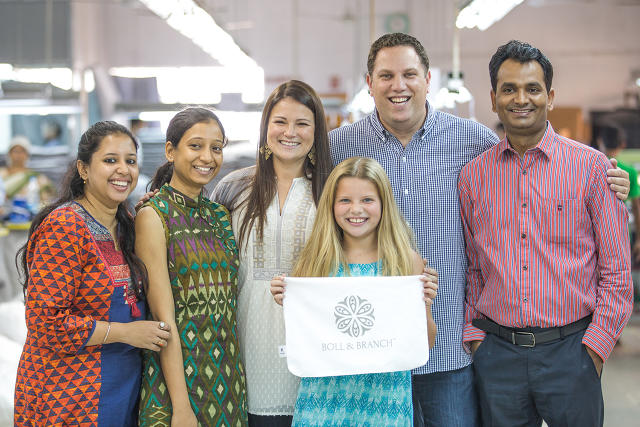
The Organic Needle In A Haystack
So what’s a well-intentioned bedsheets entrepreneur to do with the knowledge he does manage to acquire?
In 2013, Scott burrowed down into an Internet rabbit hole, looking at thousands of webpages of cotton textile suppliers and mills around the world. His goal was to locate a cotton farm that did not use pesticides. At the end of his weeks-long search, he discovered the website of a co-op made up of 105 cotton farms in northeastern India called Chetna Organic. “They had a super-rudimentary website [in Hindi] that I had to use Google Translate with at the time to help me understand,” Scott says. (They’ve since updated the site with English copy.)
It’s worth noting that the Tannens looked into using American cotton, but found that most of the finishing equipment required to turn the raw cotton into fabric wide enough for bedsheets was located overseas. This meant they would have had to ship the cotton overseas and back again to manufacture their sheets, which was an expensive proposition.
The Tannens reached out to the Fair Trade Association and to the Global Organic Textile Standard to verify that Chetna was the real deal. Once they got the seals of approval, Scott flew to India to visit the co-op in person. What he found convinced him that Chetna was the perfect match for Boll & Branch.
Chetna helps 836 farmers and their families procure organic, non-genetically modified seeds that do not require pesticides. To keep damaging insects at bay, they plant pest-repelling herbs and flowers—such as marigolds—around the crops. Chetna also supports 250 mill workers who turn the raw cotton into textiles and helps educate the local communities about how to manage their finances effectively, advising them, for instance, on whether it would be better to spend money on more land or more workers. The co-op also encourages the building of schools, hospitals, and clean water supply, making the case that a healthier, more educated population will yield more sustained economic growth. Chetna works with the Fair Trade Association to set the price of cotton annually, aligning it with the local living wage.
Of course, this means that the cost of Chetna cotton is higher than the market price, which scares away many companies. In the end, though, that’s not such a bad thing: The co-op ends up working with brands that share its values. Whole Foods and Prana, for instance, tap Chetna for certain products. Over the past two years, the Tannens have built a strong relationship with the organization, visiting the site and placing increasingly substantial orders as Boll & Branch has grown. They are now Chetna’s biggest customer.
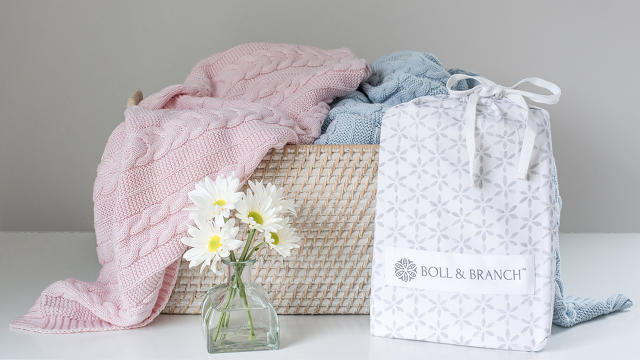
The Luxury Bedsheets Boom
The Tannens attribute their success to two factors. First, there’s been a surge in the luxury bedsheets market over the last three years, with a spate of new direct-to-consumer businesses, such as Brooklinen and Parachute, entering the market. Boll & Branch launched just as this trend was taking off—and distinguished itself as the sole company in this category to use organic cotton and ensure an ethical supply chain from start to finish.
And that’s part two of the equation. Over the last few years, consumer demand for ethical and ecological products has increased significantly. Recent research from Mintel shows that 56% of U.S. consumers will stop buying from companies that they believe are unethical. And more than a third of consumers will tell their friends when they believe that a company is operating in an honest, fair, and responsible fashion. It’s no wonder, then, that Boll & Branch goes to great lengths in its marketing to make sure customers understand the brand’s ethos. In a video on the company’s website, a woman declares, “Everyone deserves a good night’s sleep, from customers to farmers to factory workers.”
“What we’ve tried to do is create beautiful products that will stand their ground against any other luxury sheets on the market,” Missy says. “We are working hard to make our sheets better in every way, from how we source the cotton to ensuring the colors are dyed to perfection so customers get rich blues and bright whites.”
In other words, the comfort of a clear conscience.
Some of the 250 mill workers employed by Chetna Organic in Orissa, India, which provides cotton to Boll & Branch.
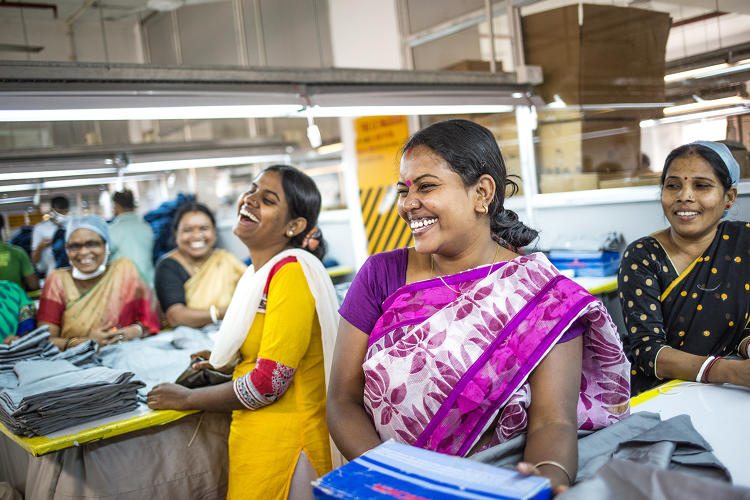
Boll & Branch was founded in 2014 by husband and wife team, Scott and Missy Tannen.
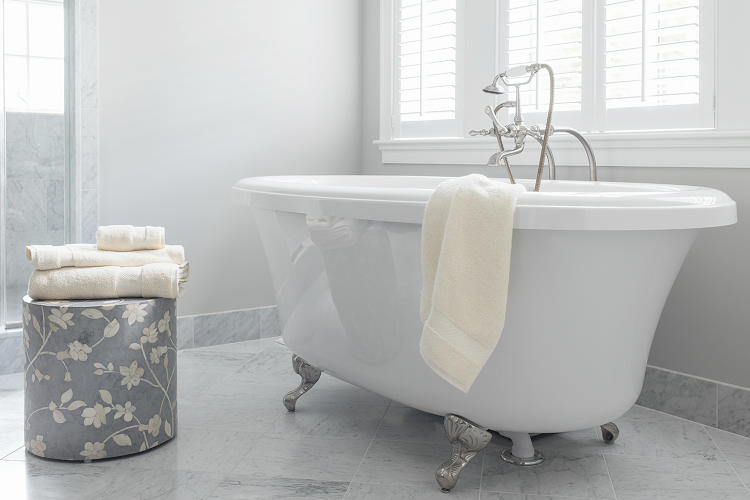
A factory worker puts the finishing touches on Boll & Branch sheets.
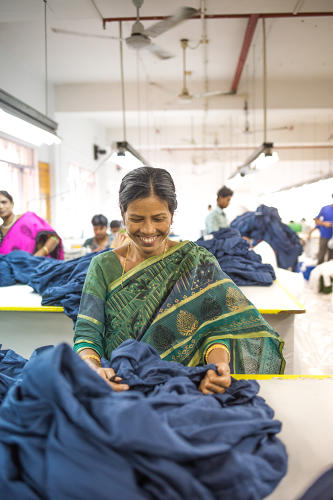
Boll & Branch is part of a new generation of direct-to-consumer luxury bed linen companies.

The Chetna Organic collective ensures that all workers, like this one in northwestern India, receive a living wage.
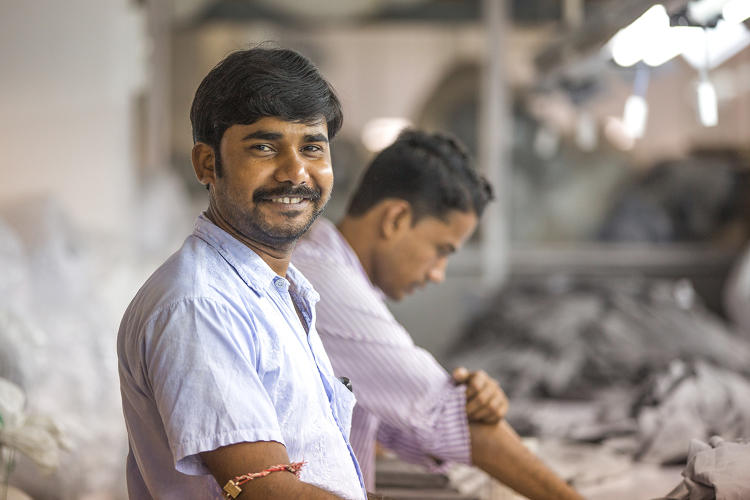
A mill worker irons Boll & Branch sheets before they are packed for shipment.
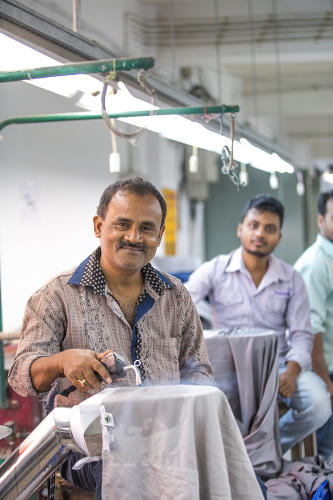
The Chetna Organic collective employs 836 farmers and thousands of cotton pickers, like this woman.
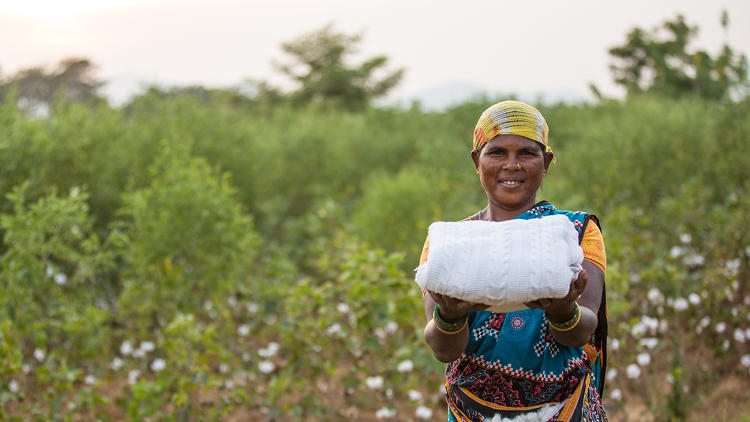
By selling directly to consumers, Boll & Branch can offer ethically produced merchandise at a lower price than most luxury brands.
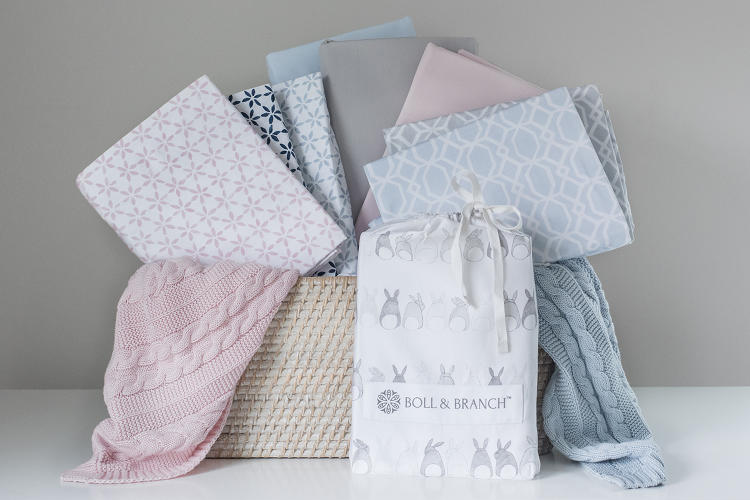
Farms in the Chetna Organic collective do not use pesticides, which creates much safer conditions for workers.

The company’s motto is, “Everyone deserves a good night’s sleep, from customers to farmers to factory workers.”

A Chetna Organic worker with raw cotton.
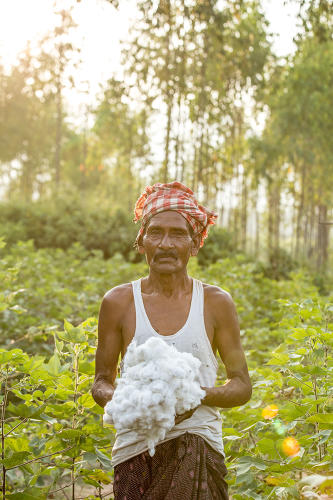
Fast Company , Read Full Story
(48)



